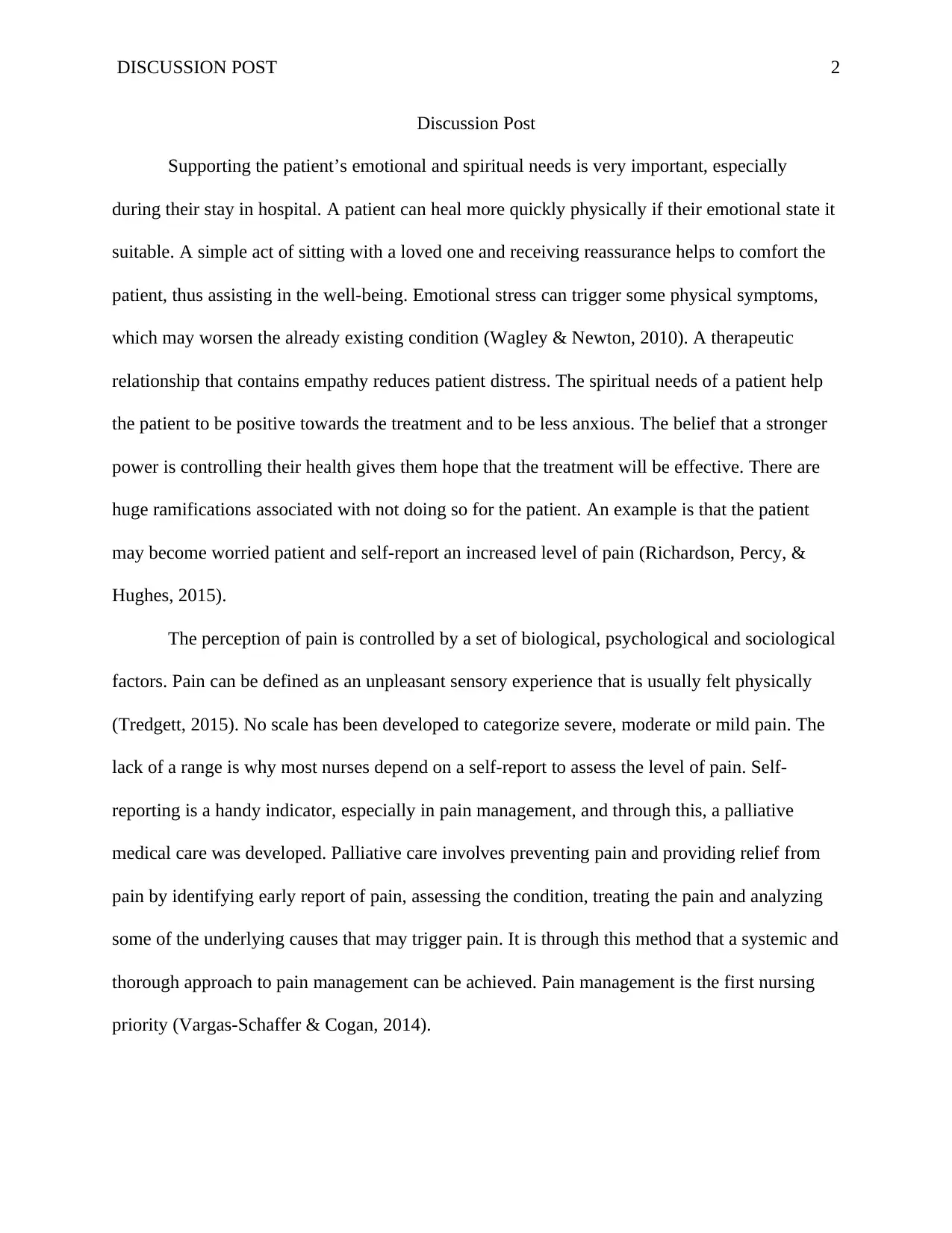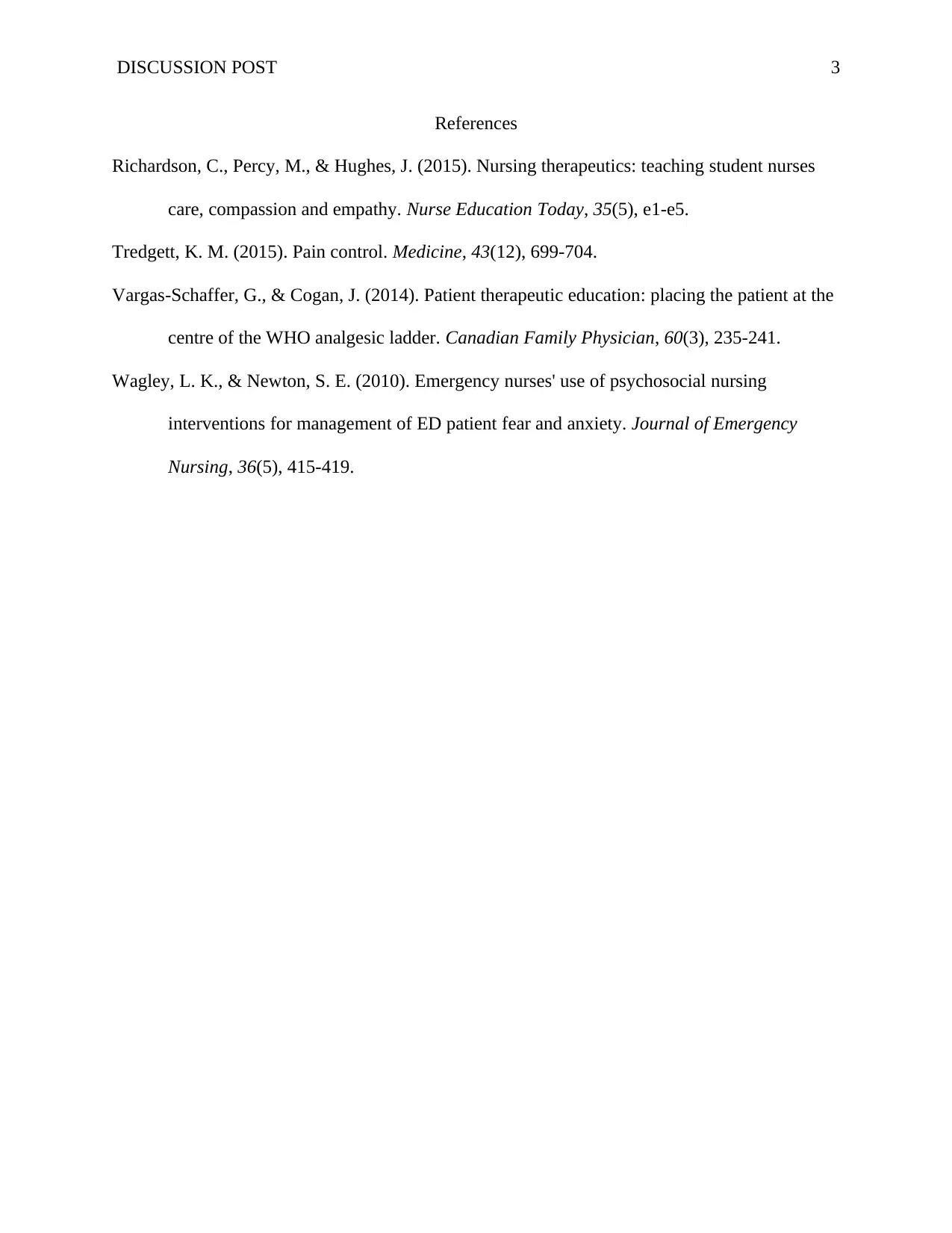Discussion Post: The Role of Nursing in Patient's Emotional Well-being
VerifiedAdded on 2022/11/24
|3
|498
|54
Discussion Board Post
AI Summary
This discussion post emphasizes the significance of addressing patients' emotional and spiritual needs within healthcare settings. It highlights how these aspects contribute to overall well-being, potentially influencing physical recovery and reducing anxiety. The post discusses the impact of emotional stress on physical symptoms and the benefits of therapeutic relationships. Furthermore, it explores pain management strategies, including the use of self-reporting, palliative care, and the crucial role of nurses in assessing and alleviating patient pain. The post references several research papers to support its arguments, emphasizing the importance of a holistic approach to patient care. The post also stresses the importance of pain management as the first nursing priority.
1 out of 3








![[object Object]](/_next/static/media/star-bottom.7253800d.svg)